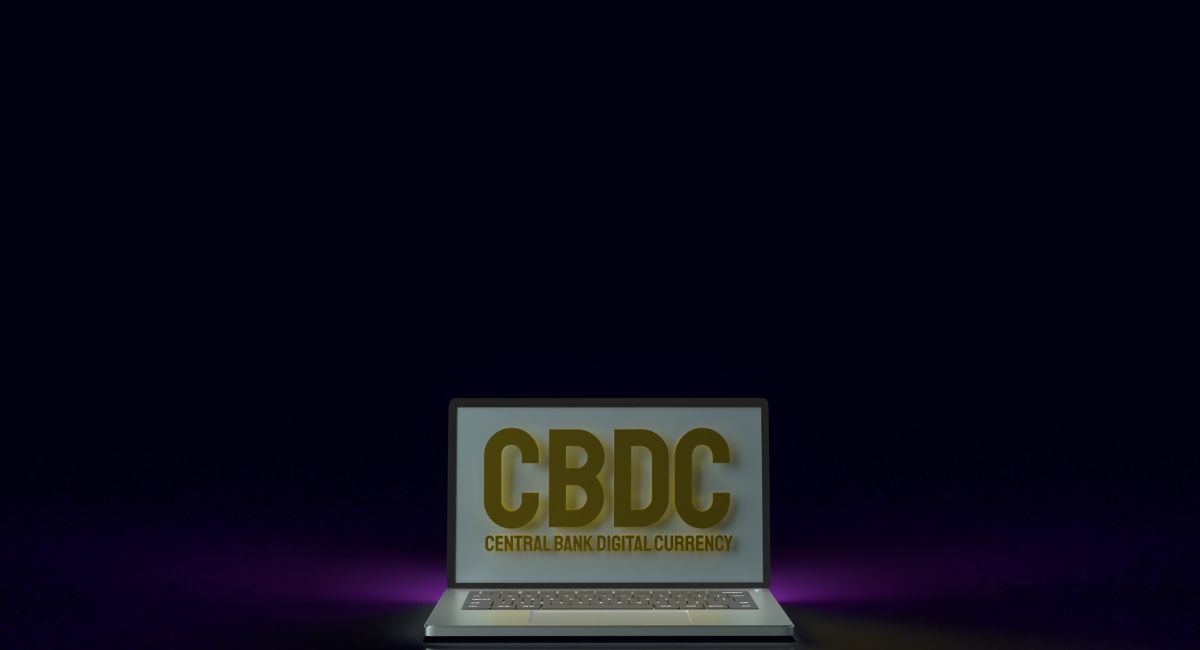How CBDC and Cryptocurrency will boost public opinion on digital assets
A central bank digital currency (CBDC) is a digital or electronic form of fiat currency that is issued by a central bank. CBDCs are designed to offer the same legal tender status and user protections as physical cash, but with the added benefits of digital payments, such as speed, convenience, and security.
CBDCs are still in the early stages of development, but there is a growing interest in them among central banks around the world. Some of the potential benefits of CBDCs include:
- Improved efficiency and convenience: CBDCs could help to improve the efficiency and convenience of payments, by making it easier and faster to transfer money between individuals and businesses.
- Reduced costs: CBDCs could help to reduce the costs of payments, by eliminating the need for intermediaries such as banks and payment processors.
- Enhanced financial inclusion: CBDCs could help to enhance financial inclusion, by making it easier for people who do not have access to traditional banking services to participate in the economy.
- Reduced risk of fraud and counterfeiting: CBDCs could help to reduce the risk of fraud and counterfeiting, by providing a more secure and traceable form of payment.
However, there are also some potential risks associated with CBDCs, including:
- Increased surveillance: CBDCs could make it easier for governments to track and monitor financial transactions.
- Cybersecurity risks: CBDCs could be vulnerable to cyberattacks, which could lead to financial losses or disruptions.
- Stability risks: If CBDCs become widely adopted, they could pose a risk to financial stability, by reducing the role of commercial banks in the financial system.
Overall, CBDCs have the potential to offer a number of benefits, but there are also some potential risks that need to be considered. Central banks will need to carefully weigh the benefits and risks before deciding whether or not to introduce CBDCs.
Here are some examples of countries that are exploring the possibility of issuing CBDCs:
- China: China is one of the most advanced countries in terms of CBDC development. The People’s Bank of China (PBoC) has been conducting trials of a CBDC called the Digital Yuan since 2014.
- Sweden: The Sveriges Riksbank, the central bank of Sweden, is also exploring the possibility of issuing a CBDC. The Riksbank has been conducting trials of a CBDC called e-krona since 2017.
- Canada: The Bank of Canada is also exploring the possibility of issuing a CBDC. The Bank of Canada has been conducting research on CBDCs since 2019.
It is still too early to say when or if CBDCs will become widely adopted. However, the potential benefits of CBDCs are significant, and central banks around the world are taking a close look at this technology.
How CBDC and Cryptocurrency will boost public opinion on digital assets?
Central Bank Digital Currency (CBDC) and cryptocurrencies have the potential to boost public opinion on digital assets in several ways. Let’s explore the details:
1. Enhanced Trust and Security: CBDCs are digital currencies issued by central banks, backed by the government’s full faith and credit. Their introduction can instill greater trust and confidence in digital assets among the general public. CBDCs are designed with robust security measures, encryption techniques, and advanced blockchain technology, making them highly secure and resistant to fraud. This heightened security can alleviate concerns regarding hacking, theft, and scams, fostering a positive perception of digital assets.
2. Mainstream Adoption: The introduction of CBDCs can provide a government-backed and regulated digital currency alternative. As a result, individuals who may have been skeptical or reluctant to embrace cryptocurrencies due to their perceived lack of regulation can feel more confident in using digital assets. The endorsement of CBDCs by central banks can serve as a catalyst for widespread adoption of cryptocurrencies, as people become more familiar and comfortable with the concept of digital currencies.
3. Financial Inclusion: CBDCs have the potential to improve financial inclusion by providing access to banking services for the unbanked and underbanked populations. Traditional banking services may be inaccessible to certain individuals due to geographical limitations, lack of documentation, or high costs. By leveraging CBDCs, governments can offer secure and low-cost digital wallets to citizens, enabling them to participate in the digital economy and have access to essential financial services. This inclusive approach can generate positive sentiment towards CBDCs and digital assets.
4. Economic Efficiency: Cryptocurrencies, such as Bitcoin and Ethereum, have showcased the potential for fast, borderless, and low-cost transactions. These characteristics can significantly improve efficiency in cross-border remittances, international trade, and financial transactions. As CBDCs leverage similar technology, they can offer the same benefits while being backed by central banks. The increased efficiency and reduced costs associated with digital assets can garner public support and appreciation for their convenience and economic advantages.
5. Innovation and Technological Progress: The emergence of cryptocurrencies and CBDCs has spurred technological innovation in the financial sector. Distributed ledger technology, smart contracts, and decentralized finance (DeFi) platforms have gained prominence, offering new possibilities for financial services. The public’s perception of digital assets can be positively influenced by the innovative solutions they bring, such as decentralized exchanges, tokenization of assets, and novel fundraising mechanisms like Initial Coin Offerings (ICOs) or Security Token Offerings (STOs). These advancements can lead to increased public interest, enthusiasm, and positive sentiment towards digital assets.
6. Investment Opportunities: Cryptocurrencies have demonstrated significant growth potential, with some individuals achieving substantial returns on their investments. As more people recognize the potential for wealth creation through digital assets, their perception and interest in cryptocurrencies can become more favorable. Additionally, as governments explore the integration of CBDCs with existing financial systems, investment opportunities related to CBDC infrastructure and supporting technologies may emerge. Such investment prospects can attract public attention and boost confidence in digital assets.
Overall, the introduction of CBDCs by central banks, combined with the ongoing development and adoption of cryptocurrencies, can enhance public opinion on digital assets. Factors such as increased trust, mainstream adoption, financial inclusion, economic efficiency, technological progress, and investment opportunities contribute to a positive narrative around digital assets, fostering greater acceptance and support among the general public.
Risks associated with CBDC and Cryptocurrency
Blockchain-based CBDCs and cryptocurrencies come with inherent risks and challenges that need to be carefully considered. Here are some of the key risks associated with these digital currencies:
1. Regulatory Uncertainty: The regulatory landscape surrounding blockchain-based CBDCs and cryptocurrencies is still evolving. Different jurisdictions may have varying approaches, creating uncertainty for users, businesses, and investors. Regulatory changes or restrictions can impact the adoption, operation, and value of these digital currencies.
2. Price Volatility: Cryptocurrencies are known for their price volatility. The value of cryptocurrencies can fluctuate dramatically within short periods, which can lead to potential financial losses for investors and affect market stability. Factors such as market demand, regulatory decisions, technological developments, and investor sentiment can greatly influence price movements.
3. Security and Hacking Risks: Blockchain technology itself is considered secure, but the surrounding infrastructure and user practices can introduce vulnerabilities. Cryptocurrency exchanges and digital wallets are potential targets for hackers, and instances of cyberattacks and theft have occurred. If not properly secured, private keys or access credentials can be compromised, resulting in the loss of funds.
4. Lack of Consumer Protection: Cryptocurrency transactions are irreversible, and in case of fraud or loss, it can be challenging to recover funds. Unlike traditional banking systems that offer various consumer protections and dispute resolution mechanisms, cryptocurrencies generally lack similar safeguards. Users need to exercise caution and responsibility when handling their digital assets.
5. Potential for Money Laundering and Illicit Activities: The pseudonymous nature of some cryptocurrencies can be exploited for illicit activities, including money laundering, tax evasion, and illegal transactions. While efforts are being made to enhance transparency and compliance, there are still concerns about the misuse of cryptocurrencies for illicit purposes, which can invite regulatory scrutiny and impact their reputation.
6. Lack of Scalability: Blockchain networks, especially those used for cryptocurrencies, face scalability challenges. As the number of transactions increases, the capacity of the network to process them efficiently can be strained. This can result in delays, increased fees, and reduced user experience. Scalability solutions, such as layer-two protocols, are being developed, but widespread implementation is still ongoing.
7. Environmental Impact: Some cryptocurrencies, such as Bitcoin, rely on energy-intensive mining processes. The significant energy consumption associated with mining has raised concerns about the environmental impact and sustainability of cryptocurrencies. Addressing these concerns will require the development and adoption of more energy-efficient consensus mechanisms and renewable energy sources.
8. Centralization Risks: While cryptocurrencies aim to be decentralized, certain aspects can exhibit centralization risks. Concentration of mining power, wealth distribution, and influence of large cryptocurrency holders (whales) can impact market dynamics and introduce vulnerabilities. Centralization can undermine the original principles of decentralization and result in market manipulation or control by a few entities.
9. Lack of Interoperability: The lack of standardized protocols and interoperability between different blockchain networks and cryptocurrencies can limit their usability and hinder their integration into existing financial systems. Fragmentation and compatibility issues can impede the seamless transfer and exchange of digital assets across different platforms.
10. Technology and Adoption Risks: Blockchain technology is still relatively new and rapidly evolving. There are risks associated with the development, implementation, and adoption of blockchain-based CBDCs and cryptocurrencies. Technical vulnerabilities, bugs, or flaws in the code could be exploited, leading to potential disruptions, loss of funds, or compromised security.
11. Perception and Reputation Risks: The reputation of blockchain-based CBDCs and cryptocurrencies can be influenced by negative media coverage, scams, fraudulent schemes, or market manipulations. Negative events or perceptions can erode trust and confidence in these digital currencies, hindering their widespread adoption and acceptance.
While crypto assets are mostly speculative, innovations like
FedNow and a potential US CBDC
could bring the US financial infrastructure into the digital era without the risks associated with crypto assets.
CBDC Adoption worldwide⬇️ pic.twitter.com/t9uX2g4oDM
— Crypto in Black (@thehiddenmaze) March 25, 2023
It’s important to note that efforts are being made to address these risks and challenges through ongoing research, technological advancements, industry collaboration, and regulatory initiatives. Governments and regulatory bodies are actively working on implementing frameworks to address concerns such as investor protection, anti-money laundering, and market integrity.
Furthermore, industry players are investing in improving security measures, developing more user-friendly interfaces, and enhancing the scalability and interoperability of blockchain networks. Increased awareness, education, and best practices can also help mitigate risks associated with these digital currencies.
As with any emerging technology, blockchain-based CBDCs and cryptocurrencies carry inherent risks that require careful consideration and risk management. It is essential for users, investors, and policymakers to stay informed, understand the risks involved, and take appropriate measures to protect themselves and ensure the responsible and sustainable growth of these digital currencies.
Also, read – 5 Primary Key Difference Between Stablecoin And CBDC
Future of CBDC and Cryptocurrency
The future of Central Bank Digital Currencies (CBDCs) and cryptocurrencies holds significant potential for transformative changes in the financial landscape. Here’s a detailed exploration of what lies ahead:
1. Increased Adoption and Integration: We can expect to see a wider adoption of blockchain-based CBDCs as central banks worldwide explore their potential. Several countries, including China, Sweden, and the Bahamas, have already made significant progress in developing and piloting CBDC projects. As more central banks recognize the benefits of CBDCs, we can anticipate increased integration of digital currencies into existing financial systems.
2. Enhanced Financial Inclusion: Blockchain-based CBDCs have the potential to improve financial inclusion by providing access to digital financial services for unbanked or underbanked populations. These digital currencies can enable individuals to participate in the digital economy, access banking services, and make transactions securely using mobile devices. This can help bridge the gap between traditional banking and the underserved populations, fostering economic empowerment.
3. Interoperability and Cross-Border Transactions: Efforts are underway to establish interoperability between different blockchain networks and digital currencies. This would enable seamless cross-border transactions and the transfer of value across different platforms. Interoperability can unlock new opportunities for international trade, remittances, and global financial integration, making cross-border transactions more efficient and cost-effective.
4. Improved Scalability and Efficiency: Blockchain technology is continually evolving to address scalability challenges. Solutions such as layer-two protocols, sidechains, and off-chain transactions are being developed to enhance the scalability of blockchain networks. These advancements will enable faster transaction processing, reduced fees, and improved overall efficiency, making blockchain-based CBDCs and cryptocurrencies more practical for everyday transactions.
5. Integration with Internet of Things (IoT): The convergence of blockchain technology and the Internet of Things (IoT) holds immense potential. Blockchain-based CBDCs and cryptocurrencies can be integrated with IoT devices, enabling autonomous machine-to-machine transactions and micro-payments. This integration can revolutionize sectors such as supply chain management, smart cities, and connected devices, facilitating seamless and secure transactions between IoT devices.
6. DeFi and Decentralized Applications (DApps): Decentralized Finance (DeFi) platforms and DApps are already gaining traction within the cryptocurrency ecosystem. These platforms enable users to access various financial services, including lending, borrowing, and trading, without the need for intermediaries. As blockchain-based CBDCs gain popularity, we can expect to see the development of DeFi platforms that incorporate both traditional and digital currencies, offering a broader range of financial services to users.
7. Enhanced Privacy and Security Features: Privacy concerns are being addressed with the development of more privacy-centric blockchain protocols. Innovations such as zero-knowledge proofs, secure multi-party computation, and advanced encryption techniques are being integrated into blockchain networks to enhance privacy and security features. This will provide users with greater control over their personal data and transactional privacy, ensuring a balance between transparency and individual privacy.
8. Regulatory Frameworks and Standards: Governments and regulatory bodies are actively working on developing regulatory frameworks and standards for blockchain-based CBDCs and cryptocurrencies. These frameworks aim to address concerns such as investor protection, money laundering, and market stability. The establishment of clear regulations can foster confidence among users, businesses, and institutional investors, leading to increased adoption and institutionalization of digital currencies.
9. Integration of Smart Contracts: Smart contracts, self-executing agreements coded on the blockchain, have the potential to revolutionize various industries. With the integration of smart contracts into blockchain-based CBDCs and cryptocurrencies, we can expect to see the automation of contractual agreements, simplified supply chain management, and improved transparency in financial transactions.
10. Innovation and New Use Cases: The future of blockchain-based CBDCs and cryptocurrencies will likely witness continued innovation and the emergence of new use cases. The versatile nature of blockchain technology allows for the creation of decentralized applications and the tokenization of real-world assets. We can anticipate the development of novel financial instruments, fractional ownership of assets, and the integration of blockchain into sectors such as healthcare, energy, and governance.
depending on its design and implementation. However, it’s essential to carefully consider the potential risks and challenges associated with introducing a CBDC to the financial system.
So… It seems like a CBDC after all will be pushed & after the attack on USDC…
11/11
— Dudek 🛡️ (@jr_dudek) March 14, 2023
It’s important to note that the future of blockchain-based CBDCs and cryptocurrencies will also be influenced by factors such as technological advancements, regulatory developments, market dynamics, and public perception. The successful realization of their potential will depend on striking a balance between innovation, security, and regulatory compliance, fostering trust and confidence in these digital currencies.
Stay informed with daily updates from Blockchain Magazine on Google News. Click here to follow us and mark as favorite: [Blockchain Magazine on Google News].
Get Blockchain Insights In Inbox
Stay ahead of the curve with expert analysis and market updates.
latest from tech
Disclaimer: Any post shared by a third-party agency are sponsored and Blockchain Magazine has no views on any such posts. The views and opinions expressed in this post are those of the clients and do not necessarily reflect the official policy or position of Blockchain Magazine. The information provided in this post is for informational purposes only and should not be considered as financial, investment, or professional advice. Blockchain Magazine does not endorse or promote any specific products, services, or companies mentioned in this posts. Readers are encouraged to conduct their own research and consult with a qualified professional before making any financial decisions. The featured image used is just a creative depiction of the title and it does not intend to hurt sentiments of any person or institution. If it hurts anyone sentiments, please do not hesitate to reach out to Blockchain Magazine.

 Bitcoin
Bitcoin  Ethereum
Ethereum  XRP
XRP  Tether
Tether  Solana
Solana  USDC
USDC  Dogecoin
Dogecoin  Cardano
Cardano  Lido Staked Ether
Lido Staked Ether  TRON
TRON  Wrapped Bitcoin
Wrapped Bitcoin  Chainlink
Chainlink  Wrapped stETH
Wrapped stETH  Avalanche
Avalanche  Sui
Sui  Stellar
Stellar  Litecoin
Litecoin  Toncoin
Toncoin  Shiba Inu
Shiba Inu  Hedera
Hedera  LEO Token
LEO Token  USDS
USDS  Hyperliquid
Hyperliquid  Polkadot
Polkadot  WETH
WETH  MANTRA
MANTRA  Bitcoin Cash
Bitcoin Cash  Bitget Token
Bitget Token  Ethena USDe
Ethena USDe  Wrapped eETH
Wrapped eETH  Uniswap
Uniswap  Monero
Monero  NEAR Protocol
NEAR Protocol  Pepe
Pepe  WhiteBIT Coin
WhiteBIT Coin  Aave
Aave  Bittensor
Bittensor  Ondo
Ondo  Aptos
Aptos  Internet Computer
Internet Computer  Dai
Dai  Official Trump
Official Trump  Ethereum Classic
Ethereum Classic  Mantle
Mantle  Tokenize Xchange
Tokenize Xchange  OKB
OKB  Gate
Gate  sUSDS
sUSDS  Sonic (prev. FTM)
Sonic (prev. FTM) 




